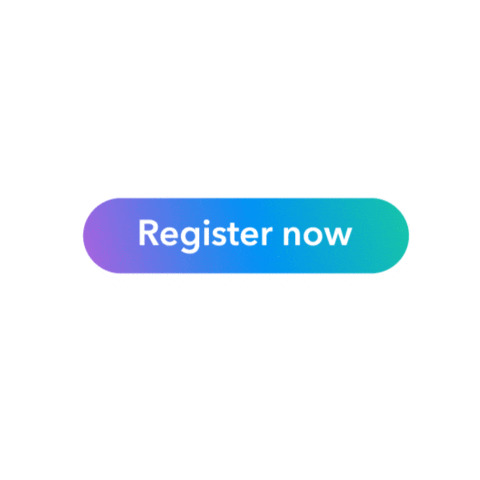ReID_plus_joints Work Job Wfh
Secured Facility Privacy
Training Work Job Wfh
Please complete practice scenario
Telegram Group Links | Join, Share

Welcome to ReID_Volunteer_Collection video annotation Intro Course!
Welcome to ReID_Volunteer_Collection video annotation Intro Course!
This course is designed to help you become an attempter on reid_plus_joint tasks. In these tasks, you draw boxes and keypoints on humans.
This is what a correct task looks like:
This is a great project because:
It will last at least 3 months with tasks always available
It contains multiple annotation types in a single task. This can be used for other upcoming projects
You will always have someone available on Slack to answer any questions you may have
High-quality work will earn you great pay
Tool Link
Terms & Conditions apply*
EARN USDC BY AIRTM
!Shubh Shuruaat Start Pay ke Sath!
बिजनेस प्रूफ बिजनेस लोन लेने के लिए जरूरी डॉक्यूमेंट - A
Unsecured MSME Business Loan
Loan Eligibility Criteria Documentation Required
Required

Bank Loan Knowledge Return Home Page
Start-Pay-YouTube
startpayonline.com/loan Return Home Page
STARTPAYONLINE
Check Cibil Score Online & Get Your Credit Report For Free
Work Surveys - Other's Job
सर्वेक्षण पूरा करें और नकद कमाएँ
यहां आपके लिए सबसे बेहतरीन सर्वेक्षण मिलान दिए गए हैं। आपको सर्वोत्तम संभव पुरस्कार देने के लिए इन्हें सावधानीपूर्वक चुना गया है।
कृपया प्रश्नों को पढ़ने के लिए अपना समय लें और उनका सच्चाई से उत्तर दें अन्यथा आपका खाता अवरुद्ध किया जा सकता है ।

Telegram Group Links | Join, Share
Terms & Conditions apply*
Audio Sample Recording-Play
#Apply Now:- LIKE THE POST AND COMMENT#INTERESTEDI WILL SHORTLIST YOU WITHIN NEXT 24Hr. References are highly appreciated.
नवीनतम उपलब्ध सर्वेक्षणों तक पहुंचने के लिए रिफ्रेश करें।

Remote Freelancer Hub
Get Your FREE Remote Account Today!
Remote Freelancer Hub
Get 14% Off Remote's EOR Service
Tasks in these projects usually require effort and time.
You don’t need a very powerful computer (but you do need a computer, not a phone). If you can stream Netflix, your computer is probably fast enough for these tasks.
Let’s get started!
🧠 Here's what you'll be doing
Task Overview
You will see a 2D office scene with 30-225 frames and there will be 5 different scenarios. You will be drawing 2D boxes around each person in the frame, adding some key points to their bodies and adding attributes to them.
We will also have a list of 15 people that we must use to identify the ID of the person in the frame. Please keep it handy because you will be using it on every task you do:

List of people's IDs and outfits
One of the most common struggles is to identify the face direction of the person, so make sure to read and watch carefully.
OK, now let's talk about the most useful part of the instructions, the workflow!
Next you will see a step-by-step guide on how to do each task properly. It will tell you where to start and what to do.
It shows the key things you need to know, so watch it carefully!
1. Tightly place a bounding box around all human bodies that meet the minimum size requirement.
Do Not annotate boxes if:
Box width is less than 20 pixel
OR
Box height is less than 40 pixel
2. Annotate from the top of the head to the bottom of the feet.
3. Annotate from the left to the right hand (or the widest parts of the body on either side)
The tolerance of bounding box coordinate error is 3 pixels.
EXCLUDE attached objects (e.g. hats, hair buns on top of heads, bicycles / vehicles etc.)


What to do if the person's body is occluded or truncated
If a part of the person's body is outside the image (truncated), use your best guess to estimate the rest of the body.
But if 75% or more of a person's body is outside the image, DO NOT annotate it with the box.


If a part of the person's body is ooccluded, use your best guess to estimate the rest of the body.
But if 90% or more of the person's body is occluded, do NOT annotate the box.


If the person is visible through glass (e.g. cars, shop windows) you still need to annotate it. (Glass doesn’t count as an occlusion)

- Do not annotate reflections
- Do not annotate boxes if the box width is less than 20 pixels or if the box height is less than 40 pixels
Here you will find the list of attributes you must choose for every single box in the image. We will see each one in detail in the next slides.

You’re about to become a box annotator expert.
First, you need to make sure you have your List of people's IDs and outfits on hand.
Once you open your first task you should see something like this:

- Click on the bottom right "Box" button
![]()
2. Draw a rough box around the person (we will detail it in the coming steps) and you will see your first attribute popping up.

a. If the person is on the list of people's IDs and outfits you will select "person"
b. If the person is not on the list you should select "non_target_person"
3. After choosing the right label you need to fix the edges of the box to fit perfectly on the person. Don't forget to estimate where the body (in this case the head) would end if the person has less than 75% outside the picture.

After you finish you should see at the right of your task this menu.

Let's go through each one of them.
Now that your box is perfect, let’s get into those attributes.
The first ones are identity attributes
- Person_id
- ID of the person in the bounding box based on the List of people's IDs and outfits. (There are 15 distinct people - 15 IDs)
- Cloth_id
- ID of this person's clothing is based on the List of people's IDs and outfits.
- There are 2 cloth IDs in 1-person scenarios project.
- ID 0: not wearing Woven black jacket
- ID 1: wearing Woven black jacket
For more than 1-person scenarios project, please select cloth ID 2.

- Body_direction
- This is a critical attribute so please read carefully
- You can see examples of each direction in the instructions document.
- Select the direction of the human's body
- Consider body direction in yaw dimensions relative to camera
- Use this guide to determine which value to select:
- Draw an imaginary arrow from the center of the back through the center of the stomach
- Wherever the arrow points on the circle below equals the body direction

For video annotation - please select on a frame by frame basis
Note: If a person is seen from the top / at an angle / not standing on their feet, predict body_direction as if the person is standing on their feet, in normal view, using camera perspective
In an ambiguous case, please select between back, front, left or right. Whichever is the closest option.
Examples:
Ambiguous between front-left and front -> select front
Ambiguous between back-right and right -> select right
These two attributes refer to the visibility of the person.
Occlusion
- 0 (not occluded / low occlusion): 0-10% of the person’s body is occluded by another object

- 1 (partly occluded): 11-70% of the person’s body is occluded by another object. Do not select if a person’s body is occluded by another part of their own body. (their own hand, arm, etc.)

- 2 (mostly occluded): 71-100% of the person’s body is occluded by another object. Do not select if a person’s body is occluded by another part of their own body. (their own hand, arm, etc.)
Truncation
- True: A part of the person’s body exists outside the image frame

- False: The entire body exists inside the image frame
Once we finish with the bounding box and its attributes we jump to the Key points
There are 19 listed below:
0: neck
1: nose
2: pelvic
3: left_shoulder
4: left_elbow
5: left_wrist
6: left_hip
7: left_knee
8: left_ankle
9: right_shoulder
10: right_elbow
11: right_wrist
12: right_hip
13: right_knee
14: right_ankle
15: left_eye
16: left_ear
17: right_eye
18: right_ear

- Don’t annotate truncated keypoints (the keypoints existing outside of the image)
- Do not annotate the keypoints occluded by the person themselves (hips occluded by their own arm, right knee occluded by their left leg, etc.)
- if occlusion=1 or occlusion=2 do not annotate occluded keypoints. Annotate only the visible keypoints.
- If occlusion=0 (not occluded or lowly occluded), annotate the keypoints occluded by other objects in the image.
In the example below, you must NOT annotate hip, knee, and ankle keypoints of the two people in the front.

Download & Print Link
Guidance
1-ReID & Joint Guide
At the left bottom you should see a botton called "point"

You need to click on each body part that need a keypoint following all the rules we just saw. Use as many ZOOM as you need.

You will see a menu on the right of the image where you need to relate each keypoint with one bounding box.

After you click on the little pencil you will see a menu like this one. (If you have more than one bounding box you will see more than one person listed)

You must do this step on each one of the keypoints, it is your choice to do them all at the end or one bye one at the same time that you annotate them.
After making all the needed annotations in the image we must add one last attribute related to the environment.
On the top right of the image, click on the "Events" tab and then "Add Event"

You will see the options displayed, we will go through each one in the next slides.


The first Attribute is Label and it only has one option so you must select "Classification"
The second Attribute is Light which determines whether the image is taken indoors or outdoors AND the lightsource
- 0 - Indoor with lamp: The scene is indoor AND the lights are turned on in the following areas
- Wood counter area
- Door entrance
- The walking path next to the counter
- 1 - Indoor without lamp: The scene is indoor AND the lights are turned off in the following areas
- Wood counter area
- Door entrance
- The walking path next to the counter
The third one refers to how many frames have the same environmental attributes so you don't have to do them all one by one. Please use it carefully.
TURNED ON

TURNED OFF

TURNED ON

TURNED OFF

TURNED ON

TURNED OFF

TURNED ON

TURNED OFF

TURNED ON

TURNED OFF

Now that we have finished annotating all bounding boxes, keypoints and attributes, it is time to repeat the same annotations on all the video frames.
Here is a great tip to make things faster:
You can copy and paste all bounding boxes and keypoints from one frame to the next one.
Click on Annotation Selector

Click and drag the mouse to cover all annotations in the image

Click on the arrow to take you to the next frame

Press ENTER on your keyboard

Don't forget to reacomodate each point to adapt them to the new person's position.
TRAINING SCENARIO
It is time to prove your understanding
Open the scenario and look around the task. Use as much zoom as you consider necessary.
Do the annotations and attributes ONLY in the first frame of the task, leave the rest frames in blanc.
Once you’re comfortable with what the correct task looks like, submit the scenario to return to this course.
You can always read the instructions again by pressing i on your keyboard.
Box
Move edge down 1 px
Down
Move edge down 5 px
ShiftDown
Move edge left 1 px
Left
Move edge left 5 px
ShiftLeft
Move edge right 1 px
Right
Move edge right 5 px
ShiftRight
Move edge up 1 px
Up
Move edge up 5 px
ShiftUp
Select left edge
A
Select right edge
D
Select top edge
W
Common Actions
Copy annotation
CtrlC
Copy annotation attributes
CtrlShiftC
Paste annotation
CtrlV
Paste annotation attributes
CtrlShiftV
Redo
CtrlShiftZ
CtrlY
Undo
CtrlZ
Image Adjustments
Decrease brightness
ShiftV
Decrease contrast
ShiftX
Decrease rotation
Shift-
Increase brightness
ShiftB
Increase contrast
ShiftC
Increase rotation
Shift=
Interface Toggles
Crosshairs
Z
Show/hide original annotations
B
Toggle annotation fill
Space
Toggle annotation selector
S
Toggle center lane visibility
Shift9
Toggle complete/edit annotation
Enter
Toggle Corner Markers
X
Toggle cross section visibility
Shift8
Toggle cursor coordinates
C
Toggle Drag to Reveal Prelabels tool
ShiftA
Toggle panning
P
Toggle point snapping
K
Toggle Point to Reveal Prelabels tool
ShiftD
Toggle ruler
R
Labeler Tools
Draw Box
Shift4
Draw Point
Shift3
Template Tool
ShiftP
Scene Navigation
Next attribute value
Ctrl]
Next frame
]
Previous attribute value
Ctrl[
Previous frame
[
Reset zoom
0
Select next frame
Shift]
Select previous frame
Shift[
Zoom in
=
Zoom out
-
Miscellaneous
Cycle details to show
G
Cycle interpolation mode
ShiftT
Delete selected annotation
Del
Backspace
Delete selected annotations from all frames
ShiftBackspace
ShiftDel
Hide overlaps with linked annotations for selected annotations
ShiftO
Hide overlaps with linked annotations for selected annotations
ShiftI
Predict frames
T
Save annotations
CtrlS
Select next annotation
N
Select previous annotation
ShiftN
Show lint errors
E
Show/hide annotations
H
Show/hide comments sidebar
CtrlH
Show/hide connections
ShiftQ
Show/hide labels
L
Show/hide link highlights
ShiftK
Show/hide OSM annotations
Shift0
Show/hide selected annotations
CtrlShiftK
Unselect annotation
Esc
Autolink
CtrlShiftL
Open/close shortcuts menu
/
Show task feedback
?
Show task instructions
I
Toggle full screen
F

Terms & Conditions apply*








